AP Precalculus – 3.11 Cosecant, Secant, Cotangent Functions
TLDRThis video script delves into reciprocal trigonometric functions, explaining how they are derived from basic trig functions by taking their reciprocal. It covers the cosecant, secant, and cotangent functions, demonstrating how to calculate their values using the unit circle and how to graph them, including handling asymptotes and transformations.
Takeaways
- 📚 The video introduces reciprocal trigonometric functions, which are the multiplicative inverses of the standard trigonometric functions.
- 🔄 Reciprocal trig functions 'flip' the standard functions, for example, cosecant (csc) is the reciprocal of sine (sin).
- 📉 The cosecant function is denoted as CSC and is equal to 1/sin. It has asymptotes where sine is zero, causing undefined values.
- 📈 Secant (sec) is the reciprocal of cosine (cos) and is represented as 1/cos. It also has asymptotes at points where cosine is zero.
- 🤔 A memory trick for secant is that it looks like 'cosine' spelled backward, helping to remember that they are reciprocals.
- 📌 Cotangent (cot) is the reciprocal of tangent (tan), which can be expressed as 1/tan or cos/sin.
- 📝 The video demonstrates how to calculate the exact values of these functions using the unit circle for specific angles like π/6 and 3π/4.
- 📉 The script explains the process of graphing reciprocal trigonometric functions, highlighting the importance of identifying asymptotes.
- 📈 The graph of cosecant resembles a series of 'V' shapes pointing upwards and downwards towards the asymptotes.
- 📊 The secant graph is similar to that of the cosecant but shifted, with asymptotes at different positions.
- ✍️ The video also covers the transformation of these functions, including vertical stretches and horizontal translations, and how these affect the graph and range of the functions.
Q & A
What are reciprocal trigonometric functions?
-Reciprocal trigonometric functions are functions that are the reciprocals of the standard trigonometric functions. They include cosecant (csc), secant (sec), and cotangent (cot). For example, cosecant is the reciprocal of sine (csc = 1/sin), secant is the reciprocal of cosine (sec = 1/cos), and cotangent is the reciprocal of tangent (cot = 1/tan).
How is the cosecant function defined?
-The cosecant function is defined as the reciprocal of the sine function. Mathematically, it is represented as csc(x) = 1/sin(x). It is abbreviated as CSC.
What is a mnemonic to remember the relationship between secant and cosine?
-A mnemonic to remember the relationship between secant and cosine is that 'secant looks like cosine spelled backward.' This helps in remembering that secant and cosine are reciprocals of each other.
How is the cotangent function defined?
-The cotangent function is defined as the reciprocal of the tangent function. It can be represented as cot(x) = 1/tan(x) or cot(x) = cos(x)/sin(x). It is abbreviated as cot.
What are the issues with reciprocal trigonometric functions at certain points?
-Reciprocal trigonometric functions have issues at points where the denominator of the original trigonometric function is zero. This happens when sine is zero (for cosecant) and when cosine is zero (for secant and cotangent). At these points, the reciprocal functions are undefined because division by zero is not allowed.
How can you find the exact value of cosecant using the unit circle?
-You can find the exact value of cosecant using the unit circle by identifying the point on the unit circle corresponding to a given angle and then taking the reciprocal of the sine value at that point. For example, at π/6, the sine value is 1/2, so the cosecant value is 1/(1/2) = 2.
What is the process of rationalizing the denominator in trigonometric functions?
-Rationalizing the denominator in trigonometric functions involves multiplying the numerator and the denominator by a suitable term to eliminate radicals from the denominator. This is often done to simplify expressions and make them easier to work with.
How can you approximate the value of cosecant for an angle not on the unit circle?
-You can approximate the value of cosecant for an angle not on the unit circle by using a calculator and entering the expression 1/sin(angle), ensuring that the calculator is set to the correct unit (usually radians).
What happens when you try to calculate the cotangent of pi?
-When you try to calculate the cotangent of pi, you encounter an error because cotangent is the reciprocal of tangent, and tangent of pi is zero. Division by zero is undefined, so cotangent of pi is also undefined.
How can you graph reciprocal trigonometric functions?
-You can graph reciprocal trigonometric functions by first identifying the key points, such as where the function is undefined (vertical asymptotes) and where the function crosses the x-axis. Then, you can sketch the curve, keeping in mind the periodicity and symmetry of the function. Transformations like vertical shifts, horizontal shifts, and dilations can also be applied to the graph.
Outlines
📚 Introduction to Reciprocal Trigonometric Functions
The video begins with an introduction to reciprocal trigonometric functions, emphasizing the concept of taking the reciprocal of standard trigonometric functions like sine, cosine, and tangent. The presenter explains that these reciprocal functions are not inverse functions but multiplicative inverses that cancel each other out. The video introduces the cosecant (CSC), secant (SEC), and cotangent (COT) functions, highlighting their relationships with the sine, cosine, and tangent functions. The presenter uses mnemonic devices like 'secant looks like cosine spelled backward' to help remember the relationships between the functions. The video also covers how to find the exact values of these functions using the unit circle, specifically focusing on pi/6 and 3pi/4 for demonstration.
🔍 Understanding and Calculating Reciprocal Trigonometric Functions
This paragraph delves deeper into the calculation and understanding of reciprocal trigonometric functions. The presenter demonstrates how to calculate the cosecant, secant, and cotangent values for specific angles using the unit circle and the properties of the sine and cosine functions. The video shows how to handle cases where the denominator is zero, which leads to undefined values. The presenter also discusses the use of calculators for approximating values of these functions, especially when the angle is not directly on the unit circle. Examples include calculating the cosecant of pi/5 and the secant of -143 degrees, highlighting the importance of using radians in calculators. The video also touches on the limitations of calculators, such as the absence of a direct cosecant button, and how to work around this by using the reciprocal of sine.
📈 Graphing Reciprocal Trigonometric Functions
The focus shifts to graphing reciprocal trigonometric functions, starting with the cosecant function. The presenter explains that the graph of cosecant resembles an 'S' curve with vertical asymptotes at points where the sine function equals zero. The video demonstrates how to identify these asymptotes and how they affect the graph's shape. The presenter also discusses the graph of the secant function, noting that it is similar to the cosecant graph but shifted. The video emphasizes the importance of understanding the zeros and asymptotes of the cosine function to graph secant correctly. The presenter provides a visual guide on how to sketch these graphs, highlighting the key points and the behavior of the functions around these points.
🌐 Advanced Graphing Techniques and Transformations
This paragraph introduces advanced graphing techniques and transformations for reciprocal trigonometric functions. The presenter discusses how to graph secant and cosecant functions with vertical shifts and dilations. The video demonstrates a shortcut for graphing secant by pretending it is three times the cosine function, then adjusting for the reciprocal nature of the function. The presenter also covers how to graph cosecant with a vertical stretch and a horizontal shift, explaining how to adjust the graph based on the transformations applied. The video emphasizes the importance of understanding the transformations and how they affect the graph's appearance, including the changes in the position of the asymptotes and the overall shape of the graph.
📉 Graphing Cotangent with Transformations
The video continues with a detailed explanation of graphing the cotangent function, including its transformations. The presenter discusses how the cotangent function behaves differently from the tangent function, being a decreasing function instead of an increasing one. The video demonstrates how to graph the cotangent function with a vertical stretch and a horizontal shift, showing how these transformations affect the graph. The presenter also explains how to identify the asymptotes and the range of the cotangent function, highlighting the importance of understanding the periodic nature of the function and how it crosses the axis of symmetry. The video provides a step-by-step guide on how to sketch the graph, emphasizing the need for precision in placing the asymptotes and the key points.
🎓 Conclusion and Summary of Graphing Techniques
The final paragraph wraps up the video with a summary of the graphing techniques discussed for reciprocal trigonometric functions. The presenter reiterates the importance of understanding the transformations and how they affect the graphs of these functions. The video concludes by emphasizing the key points covered, such as identifying asymptotes, understanding the behavior of the functions around these points, and applying transformations to graph the functions accurately. The presenter encourages viewers to practice these techniques and to try graphing more complex functions on their own, highlighting the value of practice in mastering these skills.
Mindmap
Keywords
💡Reciprocal Trigonometric Functions
💡Cosecant (csc)
💡Secant (sec)
💡Cotangent (cot)
💡Unit Circle
💡Reciprocal Relationship
💡Graphing Trigonometric Functions
💡Asymptotes
💡Transformations
💡Calculator Usage
💡Undefined Values
Highlights
Introduction to reciprocal trigonometric functions and their mathematical representation.
Explanation of the cosecant function as the reciprocal of sine, abbreviated as CSC.
Mnemonic for remembering the relationship between secant and cosine: 'Secant looks like cosine spelled backward'.
Cotangent function described as the reciprocal of tangent, with two alternative expressions.
Clarification that reciprocal trigonometric functions are not inverse functions but multiplicative inverses.
Demonstration of finding the exact value of pi/6 using the unit circle and the concept of cosecant.
Method for calculating secant values using the coordinates of 3pi/4 on the unit circle.
Rationalization of the denominator to simplify trigonometric expressions.
Approach to calculating cotangent values using both tangent and cosine over sine methods.
Use of calculators for approximating values of reciprocal trigonometric functions when exact values are not available.
Handling of division by zero in calculators when attempting to calculate the cotangent of pi.
Graphical representation of the cosecant function, highlighting its vertical asymptotes and periodic nature.
Graphing of secant function by using the cosine function as a reference, showing its similarities and shifts.
Illustration of the cotangent function's graph, emphasizing its decreasing nature and differences from tangent.
Shortcut method for graphing secant by pretending it's three times the cosine function and adjusting for vertical shifts.
Transformation of reciprocal trigonometric functions, including vertical stretches, horizontal dilations, and shifts.
Detailed steps for graphing transformed cosecant functions with vertical stretches and horizontal shifts.
Description of the range and vertical asymptotes for transformed cotangent functions.
Final summary of the process for graphing and understanding reciprocal trigonometric functions, emphasizing the importance of vertical asymptotes and periodicity.
Transcripts
Browse More Related Video
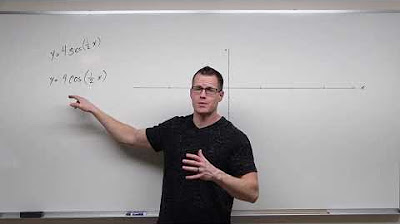
How to Graph Cosecant and Secant (Precalculus - Trigonometry 15)
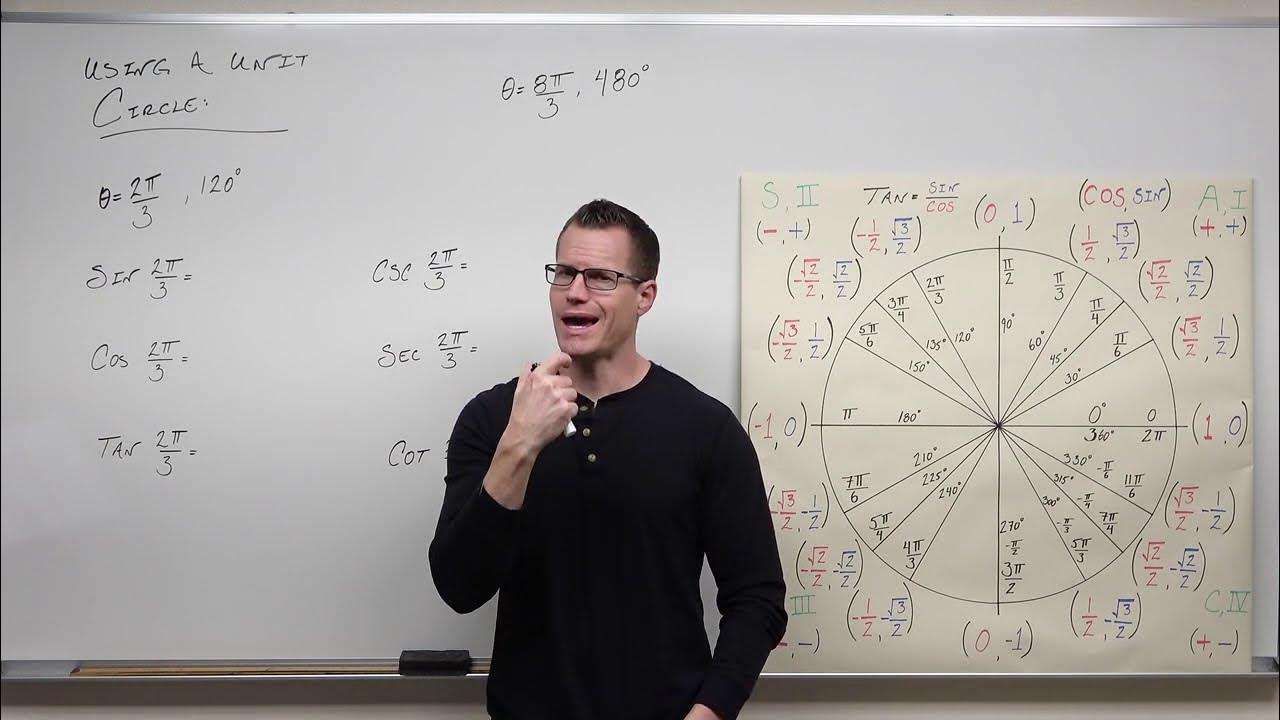
How to Use the Unit Circle in Trigonometry (Precalculus - Trigonometry 7)
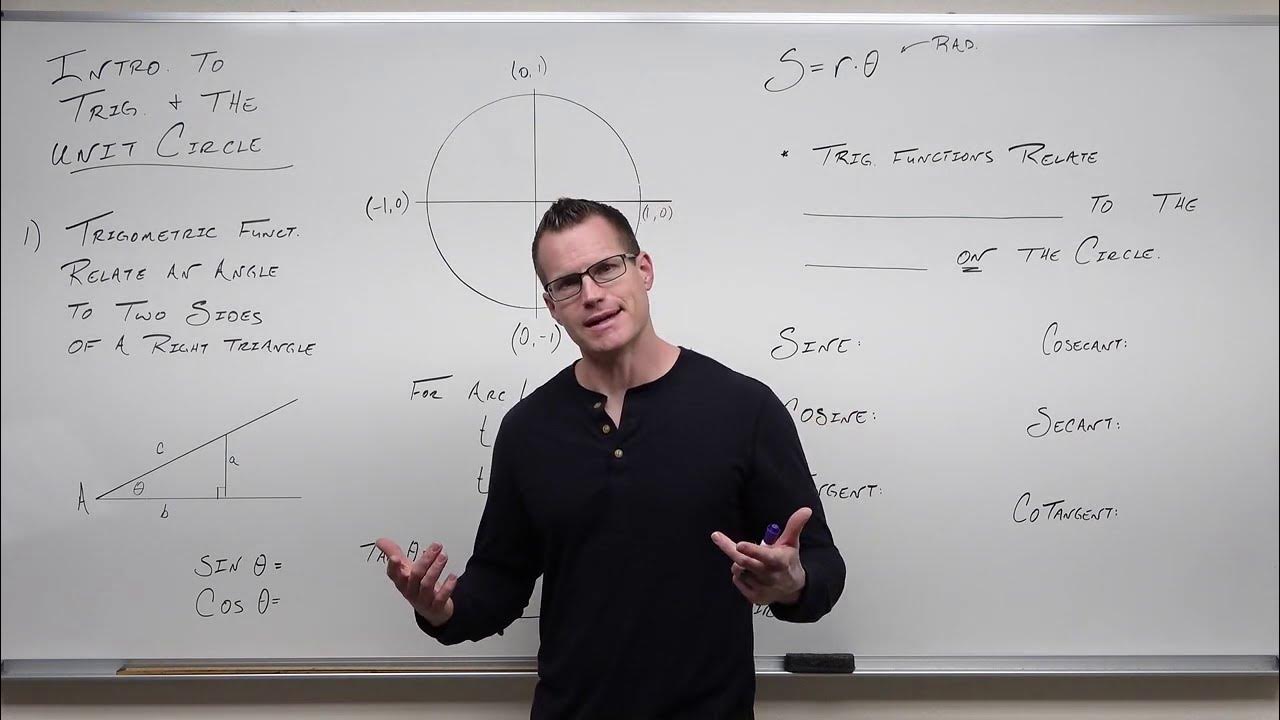
Trigonometric Functions and the Unit Circle (Precalculus - Trigonometry 6)
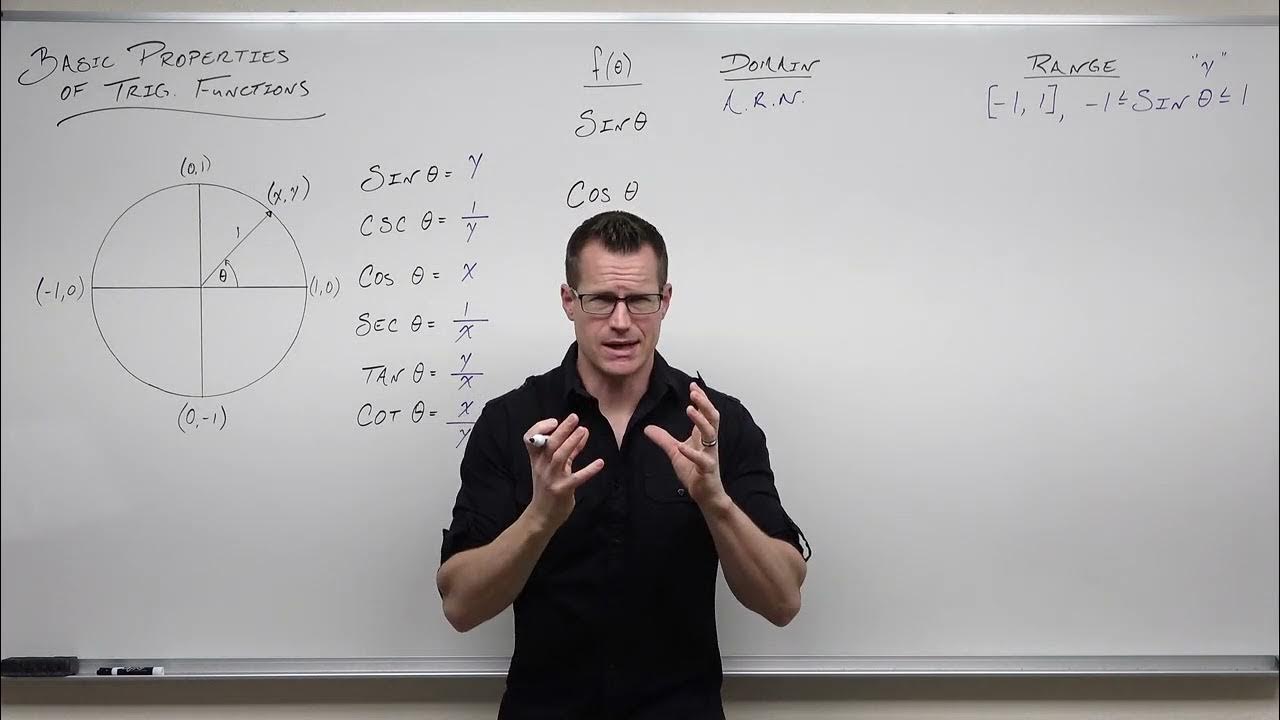
Basic Properties of Trigonometric Functions (Precalculus - Trigonometry 8)
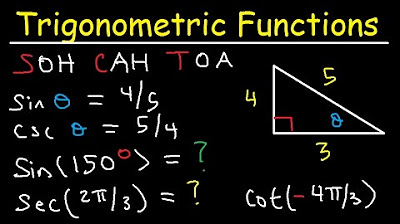
Trigonometric Functions of Any Angle - Unit Circle, Radians, Degrees, Coterminal & Reference Angles

30-60-90 Triangles - Special Right Triangle Trigonometry
5.0 / 5 (0 votes)
Thanks for rating: